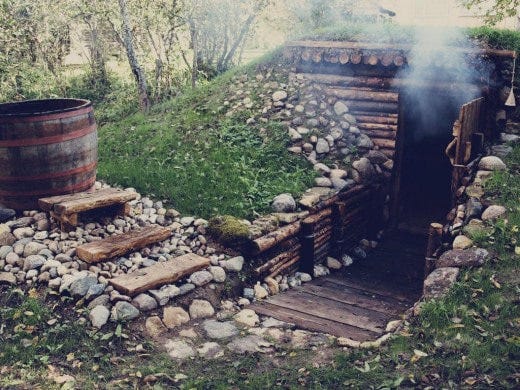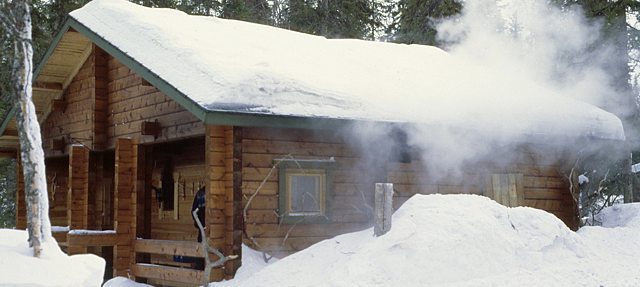
The Finnish sauna is an integral part of the country’s national identity and culture. This iconic bathing tradition stretches back over two millennia, with archaeological evidence showing primitive sauna-like structures dug into the earth dating to 7000 BC. Over generations, the sauna evolved from a humble pit to a place of spiritual ritual to a ubiquitous part of everyday community life across all classes. Its enduring popularity through changing technologies and modernization speaks to the ancient but timeless human need for therapeutic cleansing, relaxation and social connection.
The Finnish sauna is an integral part of the country’s national identity and culture. This iconic bathing tradition stretches back over two millennia, with archaeological evidence showing primitive sauna-like structures dug into the earth dating to 7000 BC. Over generations, the sauna evolved from a humble pit to a place of spiritual ritual to a ubiquitous part of everyday community life across all classes. Its enduring popularity through changing technologies and modernization speaks to the ancient but timeless human need for therapeutic cleansing, relaxation and social connection.
The earliest origins of the sauna lie in underground pits dug into the earth. Around 7000BC during the Mesolithic period, early Finns excavated primitive cave-like shelters into slopes, with a stone hearth inside to allow heating. These dugouts likely served a dual purpose - providing subterranean housing as well as a place to bathe. The shelter of the pit and radiant heat from hot stones offered a warm, protective environment to cleanse, survive brutal winters and even give birth.

This basic pit sauna concept continued for thousands of years across early Finnish and Baltic cultures, as evidenced by Karelian smoke saunas maintained until the 20th century. All featured an underground room, fire pit and water to create cleansing steam. Similar structures have been found across other ancient cultures globally, indicating an innate human tradition for heating special spaces to purify body and spirit.
Starting around 500 AD, excavations show Finns elevating the sauna into a dedicated separate structure for bathing. Instead of an underground pit, the sauna became its own small log cabin. A wood-burning stove with hot stones stood inside, without a chimney. Smoke escaped through a hole in the roof or gaps between the timber walls. This savusauna or "smoke sauna" represented a new sauna typology that would dominate for over a millennium.

To enjoy the sauna, ancient Finns endured a lengthy four hour wood-burning heating process. Once the room filled thick with smoke and heat permeated the log benches, bathers then cleaned out the soot before entering. The dry high temperatures opened pores to induce a therapeutic sweat, while aromas from the birch fuel relaxed the mind. The extreme but cleansing experience connected the physical world with spiritual senses.
Over generations, a sauna etiquette culture emerged with customs and rules. Expectations of quiet, modest and reverent behavior aimed to preserve its sanctity, similar to a place of worship. This popular gradually ritual became an integral part of community social bonding across all classes. Birth, marriage, healing and death rites incorporated purification and meditation in the simple savusauna.

In the Middle Ages across Scandinavia and the Nordic regions, community sauna bathing grew increasingly common and accepted. Unlike much of Europe where public baths had descended into disrepute, shared saunas remained respectable spaces across Finland, Sweden, Norway, Denmark and Russia. Locals bathed nude together before church on Sundays to maintain spiritual cleanliness. Literary accounts describe the ideal bathing houses purpose-built on village outskirts, for both modesty and fire safety.
But by the 1700-1800s, acceptance started declining, particularly in Sweden. High fuel demands of daily bathing concerned economists. Doctors blamed failing public health from excessive sweating. Bathing became mainly an occasional Christmas tradition. Yet separatist Finland held tightly to its regular sauna culture against this broader shift. The ritual cleansing remained a peaceful, stabilizing constant in an increasingly volatile political climate.
As Finland fought for independence from Russian rule in the mid-late 1800s, artists and leaders rallied around cultural icons representing true Finnish heritage and pride. Alongside fame of the Kalevala national epic poem grew fixation on the savusauna - appreciated as a symbol of purity, perseverance and shared community spirit in tough times. This nationalistic adoration sparked a movement to preserve and improve traditional outdoor sauna design even amidst modernization pressures.
From the late 19th century, Finland rapidly urbanized and industrialized. Rural peasants migrated to cities for factory work as infrastructure expanded. Urban housing could not support individual household saunas. Public bathhouses catered to the working class across Helsinki and other densely populated new metropolitan areas. These affordable communal facilities maintained the cherished bathing ritual.
Better indoor plumbing and electric lighting significantly impacted sauna design. Running water reservoirs created hydromassage possibilities alongside traditional steam. Improved illumination meant the necessity of separate male and female bathing shifts. But safety also became a concern in cramped wooden buildings prone to fire.
As concrete construction spread in the 1920-30s, New sanitation and building codes pressed development of improved sauna stoves. The development of electric sauna heaters that used elements encased in steel quickly replaced the traditional wood sauna stoves. Venting regulation required chimneys. Fuel efficiency was optimized. This modernized the sauna experience yet also diminished its distinctive character. Purists felt over-commercialization and regulations weakened the primordial pleasures of enduring a hard-earned, authentic löyly steam.

I'm Jasper Knight, the founder of SecretSaunas.com. During my travels through Finland and Scandinavia in 2018 I was introduced to the thrilling local ritual of taking daily hot saunas and then cooling off by plunging into the dark icy waters of a frozen lake. This experience was so fulfilling that it felt like an addiction. My desire to return to the forests and lakes of Northern Europe led me to set up Secret Saunas with the mission of bringing that authentic Finnish sauna experiences home.